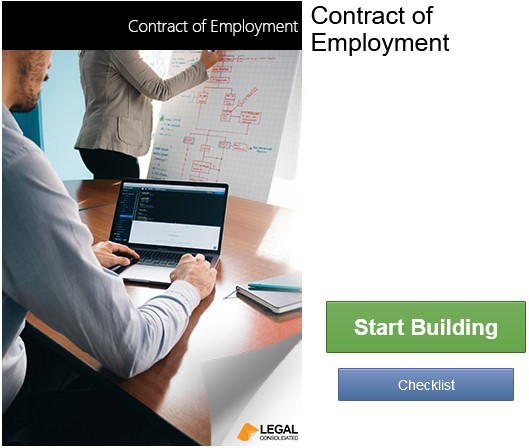Flexibility and control over your Employees – using Workplace Policies
Labour laws are skewed in favour of the Employee. How can Employers retain control?
The Employer often relies on a number of Workplace Policies. Workplace Policies are rules for Employees. But are these Policies enforceable on the Employee? What if you change the Workplace Policies after signing the Employment Contract?
The answer is how you build your Employment Contract. There are three approaches:
- Do not mention the Policies in the Employment Contract
- Mention Policies as a directive
- Mention the Workplace Policies as contractual terms
Which is correct? That depends on how important enforceability on the Employee, freedom to update the Policies, and flexibility around Employer obligation, are to you.
Where the Policies are included as a contractual term, there is no ambiguity as to their enforceability. On both the Employee and Employer. However, the Policies can’t be easily changed.
In comparison, where the Policies are included as a directive, they form part of the Employee’s duties. They are enforceable as duties. But the Policies may not be enforceable on the Employer: Geoffrey Atfield v Jupiters Limited trading as Conrad Jupiters Gold Coast. This is useful if your ex-Employee takes you to court. Including the Policies as a directive also gives you the freedom to change them. This gives you control of your business.
Our Employment Contracts give you this freedom. See a sample of our Employment Contract here.
Sexual harassment after work – help from the Policies and Employment Contract
The boundary between an individual’s work and private life is often ambiguous.
There is no definitive test as to when an individual’s conduct ‘after hours’ falls within the scope of their employer’s required standards of behaviour. Many cases contradict themselves. This is especially for out-of-hours alleged sexual harassment. Do they have the required connection to the workplace? This allows the employer to sanction the perpetrator of the complained behaviour.
Legal Consolidated’s Employment Contract and Policies seek to protect the employer:
-
Tichy v Department of Justice – touching up a young lady not allowed
The Australian Industrial Relations Commission found that sexual harassment of a female work colleague at a social gathering not sanctioned by the employer could not be relied on to justify termination of employment – Corrections Victoria (2005) 56 AILR ¶100-335
-
Keenan v Leighton Boral Amey NSW Pty Ltd – drunk man after the Christmas party
The drunken team leader kisses a co-worker in a public bar above their work Christmas knees up, it is found that the requisite connection between an employee’s actions and their workplace is not present – [2015] FWC 3156
-
Carlie Streeter v Telstra Corporation Ltd – sexual desires sated in hotel room
The employee is sacked for sexual harassment that happens in a hotel room – but this is long after a work-related function finishes. It is found that there is a sufficient connection between the complained behaviour and the workplace – [2007] AIRC 679
-
Ambrose v Moolarben Coal Operations Pty Ltd – SMS sexting
The employee is sacked for sending a co-worker an obscene image. This is via a text message. This is upheld, despite the message being sent after hours between private mobile phones.
Build a Legal Consolidated Employment Contract and Policies to reduce the Employer’s risks.
Why have Rules for Employees?
There are rules for Employees to protect Employers.
Workplace culture is changing at a frenetic rate. Every business is expected to reinvent itself regularly. Employment is now fun, cool and relaxed. Perhaps this improves morale and productivity.
Changes from formal to casual workplaces cause a blurring of professional and personal conduct. Employers must clarify boundaries and expectations. You also keep your business up to date with laws and rules. That’s the job of Workplace Policies.
You can’t put everything into an Employment Contract. Your Employee signs the Employment Contract only once. You need the power to change Policies without getting Employee approval. Your workplace policies include:
- Discipline procedures,
- Office procedures,
- Work expenses,
- Uniforms,
- Use of equipment,
- Drugs, smoking and drinking,
- Social media,
- Confidentiality,
- Privacy,
- Workplace health and safety, and
- Bullying, harassment and discrimination.
These things change. Technology, laws and your business practices are dynamic. With our Employment Contract, you get the flexibility to update your policies when you need to.
When does the Employment Contract help?
Refer to Policies in your Employment Contract. Direct your Employees to follow them. But do not include the Workplace Policies as a contractual term. You then get flexibility.
There are specific rules for how you refer to the Policies in the Employment Contract. If you include the wrong wording, the terms of the Policy are not enforceable on the Employee.
Our Employment Contracts follow two cases. They are Riverwood International Australia Pty Ltd v McCormick and Romero v Farstad Shipping (Indian Pacific). The Courts state that you must reference the Policies in the Employment Contract if you wish them to be enforceable.
Riverwood states that you validly incorporate your Policies into your Employment Contract when you satisfy these three factors:
1. ‘Abide By’
Your Employment Contract requires the Employee to “abide by” your Policies. This creates an obligation for the Employee. By signing the Employment Contract, they must do what you tell them. This wording creates a directive. It allows you to amend the Policies without varying the Employment Contract. You do not automatically need Employee approval.
These Policies principally, if not exclusively, provide entitlements to Employees. For example, the entitlement to a workplace free of discrimination. The Employer has a mutual obligation to provide this entitlement. It can put an undue burden on the Employer. Do not want to provide the entitlement? Then clearly state this. Your statement is: “That the Policies do not form part of the contract. Employees are obliged to comply with them”. Our Employment Contract does this.
We are concerned by the number of Employment Contracts we review that do not use the correct wording.
2. Clear, Ascertainable and Unambiguous Workplace Policies
The reference to the Policy must be clear, ascertainable and unambiguous: Romero. The Employee must know what they are required to do, and when. The test is whether a reasonable person has the same understanding.
3. Updating Workplace Policies
The statement in your Employment Contract refers to:
-
-
- current Workplace Policies
- alterations from time to time, and
- new Policies.
-
Does this mean you can actually update them without affecting the Employment Contract?
Not entirely. You can make updates that do not change the essential nature of the Policy. Think spelling, formatting, updating dates and places.
However, your powers to make substantial changes are constrained by the requirements:
-
-
- to make changes in line with the Employment Contract’s intentions: Hospital Products Ltd v United States Surgical Corporation.
- to not act unfairly: Ansett Transport Industries v Commonwealth.
-
If you overstep these, then you may need to agree with your Employee on the updates prior to implementing them.
Our Employment Contract gives you the flexibility. You now operate your business your way. Our Employment Contracts stand the test of time. They comply with ongoing mandatory rules and minimum conditions of employment. As these mandatory laws change, your Employment Contract automatically updates. See a sample of our Employment Contract here.
Employment Contracts help you, the Employer. Update Workplace Policies as often as you wish and the Employment Contract incorporates them.
Build employment documents on our website.
See also:
Written by Adj Professor, Dr Brett Davies,.Maddie Mulholland, UWA LLB, BCom Student, and Jing Zhi Benjamin Wong, UWA Law and Society Student.


